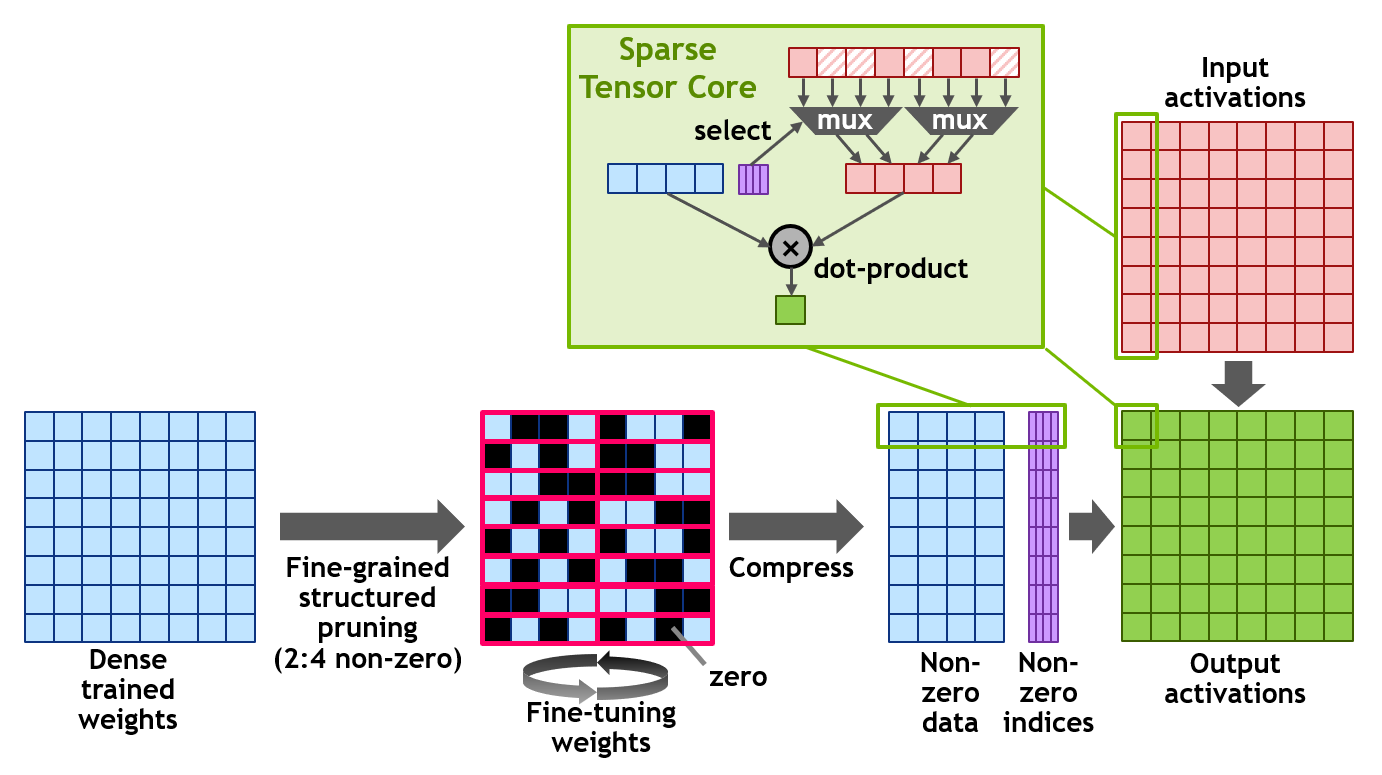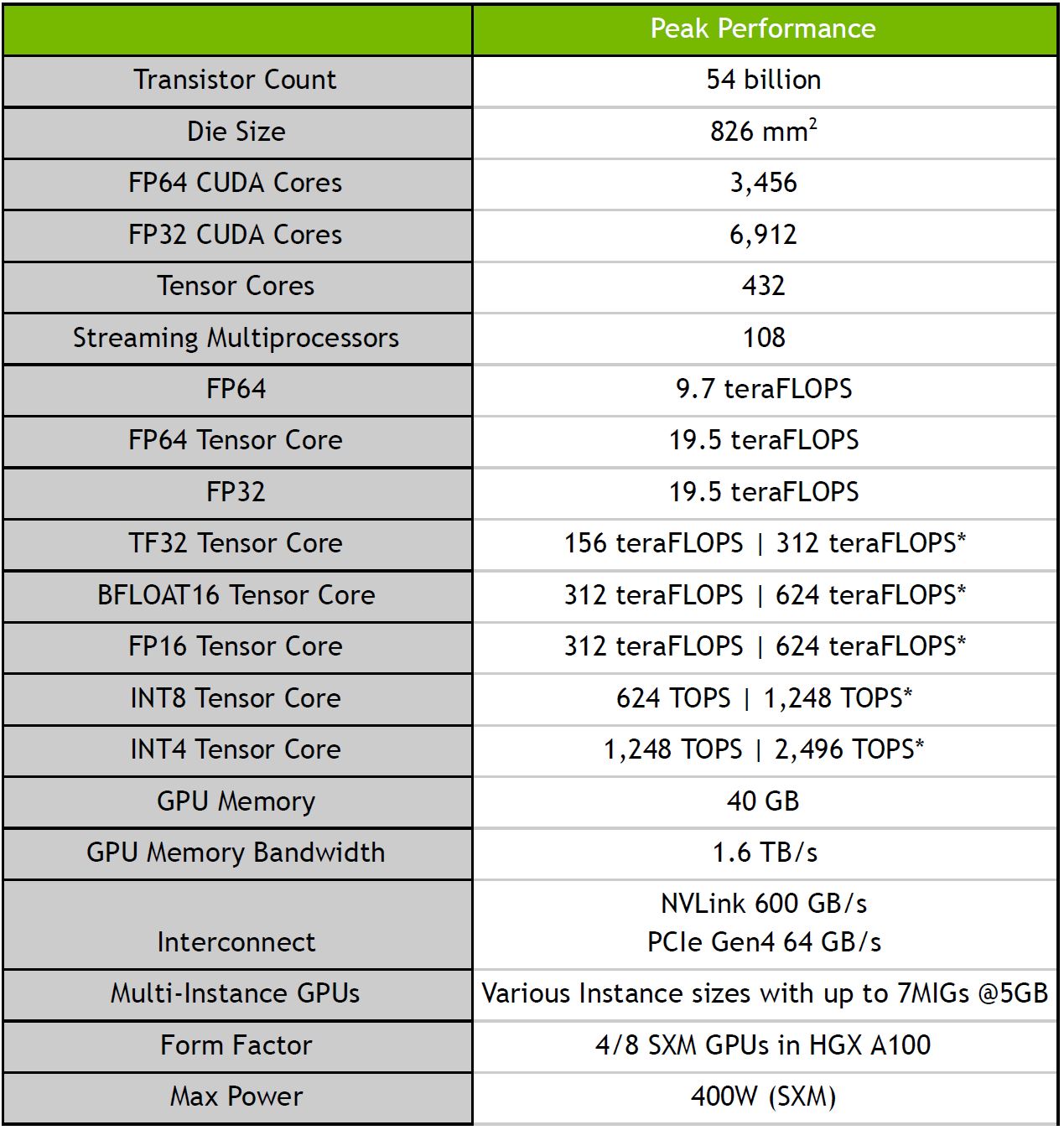Looks like you are not happy about the new sparsity tech. And BTW it's not only for int, it also works on TF16, BF16 and TF32The sparse int just looks like it's for poorly pruned deployment neural nets to begin with, how else would you zero half the nodes with no outcome effect?
Well, I suppose an easy way to optimize is highly tempting for a lot of devs, and locking them into a Nvidia only supported mode is good for Nvidia.
it's all here:
https://devblogs.nvidia.com/nvidia-ampere-architecture-in-depth/
A100 introduces fine-grained structured sparsity
With the A100 GPU, NVIDIA introduces fine-grained structured sparsity, a novel approach that doubles compute throughput for deep neural networks.
Sparsity is possible in deep learning because the importance of individual weights evolves during the learning process, and by the end of network training, only a subset of weights have acquired a meaningful purpose in determining the learned output. The remaining weights are no longer needed.
Fine grained structured sparsity imposes a constraint on the allowed sparsity pattern, making it more efficient for hardware to do the necessary alignment of input operands. Because deep learning networks are able to adapt weights during the training process based on training feedback, NVIDIA engineers have found in general that the structure constraint does not impact the accuracy of the trained network for inferencing. This enables inferencing acceleration with sparsity.
For training acceleration, sparsity needs to be introduced early in the process to offer a performance benefit, and methodologies for training acceleration without accuracy loss are an active research area.
Sparse matrix definition
Structure is enforced through a new 2:4 sparse matrix definition that allows two non-zero values in every four-entry vector. A100 supports 2:4 structured sparsity on rows, as shown in Figure 9.
Due to the well-defined structure of the matrix, it can be compressed efficiently and reduce memory storage and bandwidth by almost 2x.

Figure 9. A100 fine-grained structured sparsity prunes trained weights with a 2-out-of-4 non-zero pattern, followed by a simple and universal recipe for fine-tuning the non-zero weights. The weights are compressed for a 2x reduction in data footprint and bandwidth, and the A100 Sparse Tensor Core doubles math throughput by skipping the zeros.
NVIDIA has developed a simple and universal recipe for sparsifying deep neural networks for inference using this 2:4 structured sparsity pattern. The network is first trained using dense weights, then fine-grained structured pruning is applied, and finally the remaining non-zero weights are fine-tuned with additional training steps. This method results in virtually no loss in inferencing accuracy based on evaluation across dozens of networks spanning vision, object detection, segmentation, natural language modeling, and translation.
The A100 Tensor Core GPU includes new Sparse Tensor Core instructions that skip the compute on entries with zero values, resulting in a doubling of the Tensor Core compute throughput. Figure 9 shows how the Tensor Core uses the compression metadata (the non-zero indices) to match the compressed weights with the appropriately selected activations for input to the Tensor Core dot-product computation.

